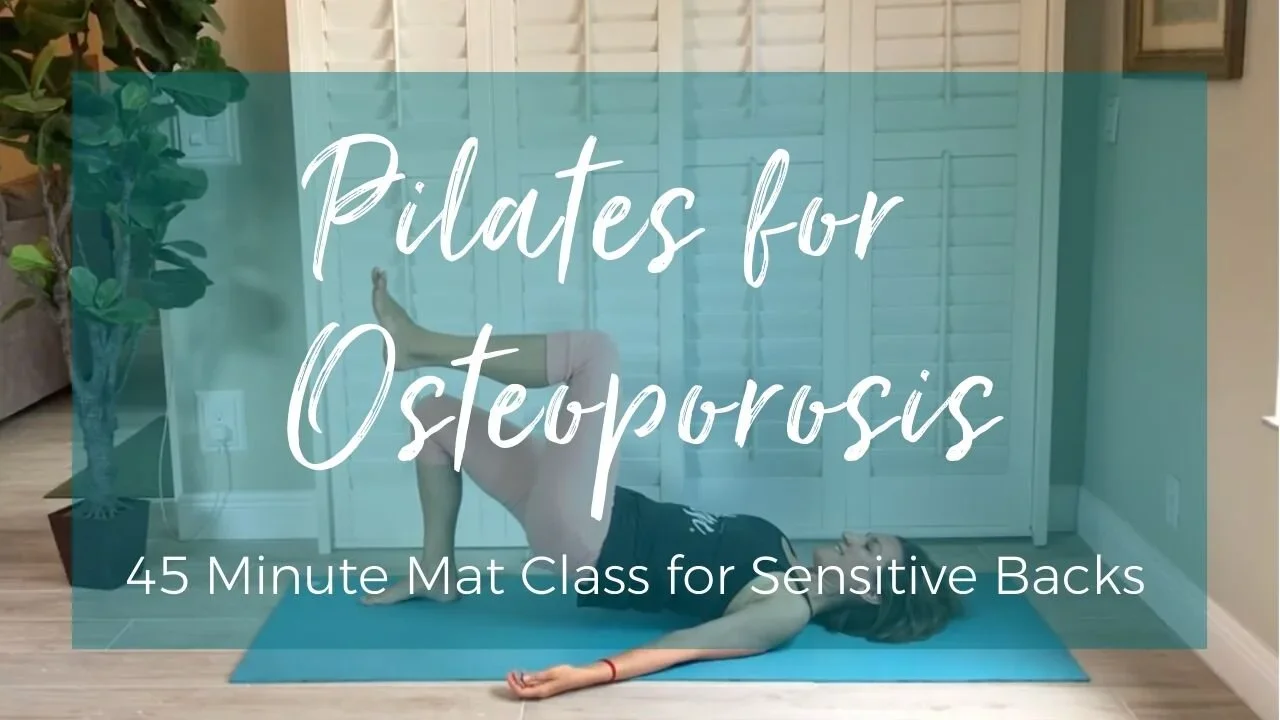pilates for osteoporosis: core strength without crunches
You've heard Pilates is great for back pain, as well as improving posture, balance and mobility. It's true! But what if your back needs special care?
THERE ARE MANY WAYS TO DEVELOP A STRONGER CORE WITHOUT DOING CRUNCHES!!
I wish someone had told me that a long time ago.
I wish someone had told me that just because I was in pain, it didn't mean I was broken and that a back is more than an MRI report.
Back injury? Osteoporosis? Stenosis? Sciatic Pain? Herniated Disc? Those can be scary words to hear. All of a sudden it feels like your body can't be trusted and you begin to fear that movement will just make things worse.
It's not true! You're not broken. You still need to move.
You just need to do it in ways that support your body's natural healing process rather than in the ways you were taught back in gym class 30 years (or more) ago.
This FREE online class was designed to focus on movements you CAN do even if your spine has special needs including osteopenia, osteoporosis, stenosis, or injuries such as slipped and herniated discs. The focus is on ways to improve posture and build strength without aggravating these conditions by avoiding deep flexion (rounding of the spine), side bending and twisting.
Why does that matter? . . Keep reading to learn more about why I’ve left these movements out of the video.
BUT . . . you don't have to have a back injury to benefit from this class.
Learn how to create stability, strength and better posture WITHOUT CRUNCHES!!
WHAT IS OSTEOPOROSIS?
Osteoporosis (and osteopenia) is a disease that causes bones to become weak and brittle, potentially leading to fractures - most commonly in the hip, wrists or spine. This degeneration can lead to back injuries and pain, loss of height and a hunched posture.
It is common in people over the age of 50. Some estimates say that half of women and a quarter of 4 men over the age of 50 have osteoporosis and as many as 1 in 3 people over 50 have some form of reduced bone density. Beyond age, there are several other factors that can increase your risk of osteoporosis, including medications, genetics, lifestyle and other medical conditions.
Like all of our tissues, bones are constantly regenerating - breaking down old cells and replacing them with new ones. Osteoporosis occurs when the body loses too much bone, makes too little bone, or both. As bones become less dense, they weaken and are more likely to break.
Here are some resources for more info on osteoporosis, risk factors and recommendations :
EXERCISE & OSTEOPOROSIS
A regular exercise routine that involves strength training, balance exercises, flexibility exercises and weight-bearing movement (like walking) is recommended for maintaining bone density and strength as well as mobility and avoiding falls.
Pilates is a great workout for improving all of these!
WORKOUT PRECAUTIONS
Certain movements, such as deep flexion, twisting and side bending can place too much pressure on weakened bones and joints so they are generally advised against if you have osteoporosis.
Flexion refers to rounding the spine. Examples are bending over from the waist to pick something up or curling up to perform an abdominal crunch (or roll out of bed).
Be cautious of these types of movements, particularly while weighted (i.e. picking up a full laundry basket) or moving through the end ranges of your mobility (bigger is not better).
That said, there are LOTS of ways to build strength (even core strength) and get a great workout while protecting your spine.
If you’re ready to see what this might look like, join me in the free online class below, designed to avoid movements that place undue stress on the joints while still getting a full body workout.
